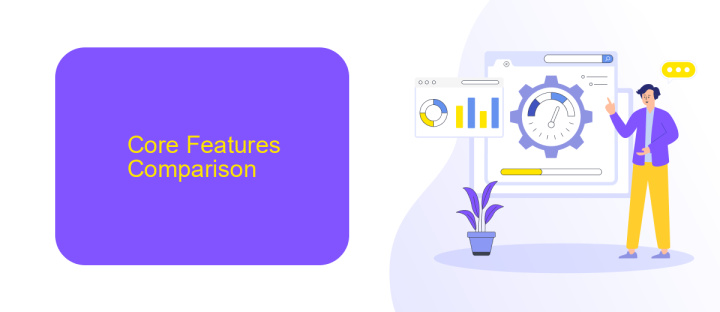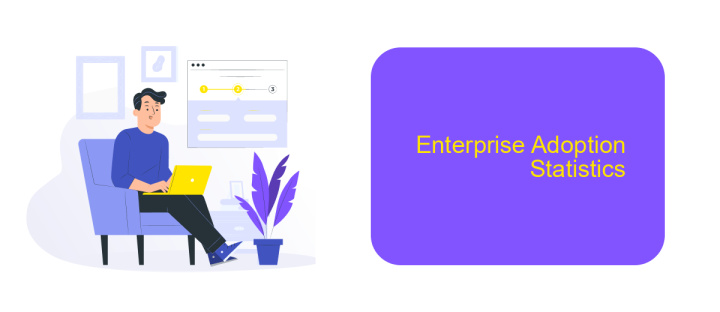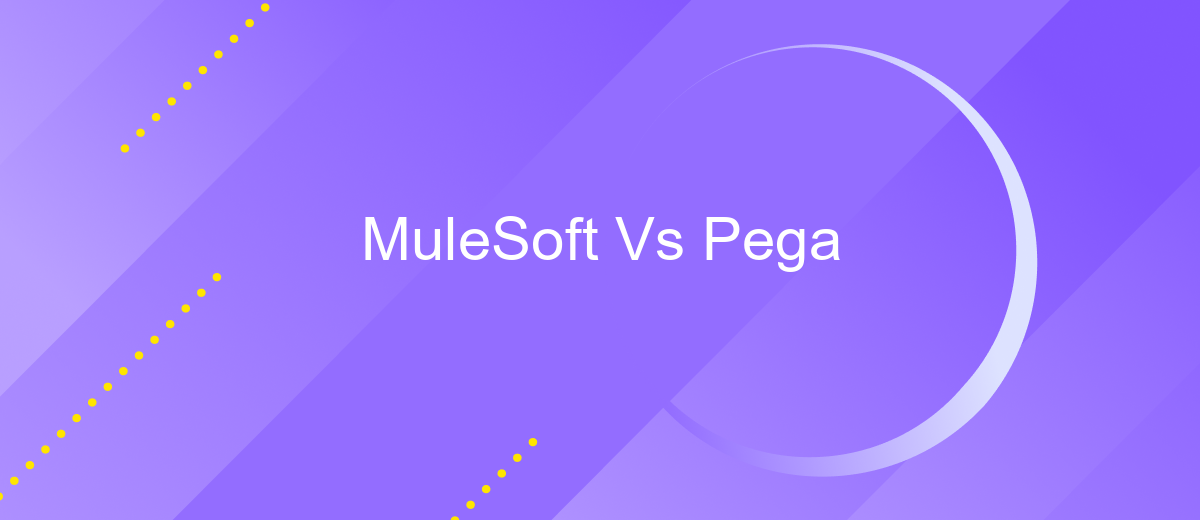MuleSoft Vs Pega
In the rapidly evolving landscape of enterprise software, choosing the right integration platform is crucial for business success. This article delves into a comparative analysis of MuleSoft and Pega, two leading solutions in the market. By examining their features, capabilities, and unique strengths, we aim to provide valuable insights to help organizations make informed decisions tailored to their specific needs.
Introduction
In today's rapidly evolving digital landscape, businesses are increasingly relying on robust integration platforms to streamline their operations and enhance efficiency. Two prominent players in this domain are MuleSoft and Pega, each offering unique capabilities to address diverse integration needs. Understanding the strengths and weaknesses of these platforms is crucial for making an informed decision.
- MuleSoft: Known for its comprehensive API management and integration capabilities.
- Pega: Renowned for its business process management and automation features.
- ApiX-Drive: A versatile service that simplifies integration setups across various platforms.
Choosing between MuleSoft and Pega depends on specific business requirements, such as the need for advanced API management or robust business process automation. Additionally, services like ApiX-Drive can further enhance integration processes, providing a seamless and efficient way to connect various applications and systems. This article delves into a detailed comparison to help you determine which platform best suits your organization's needs.
Core Features Comparison

MuleSoft and Pega both offer robust solutions for integration and automation, yet they cater to different needs and use cases. MuleSoft is renowned for its comprehensive API-led connectivity approach, enabling seamless integration across various platforms through its Anypoint Platform. This platform provides extensive tools for designing, building, and managing APIs, making it a preferred choice for enterprises seeking to unify their data and applications. On the other hand, Pega excels in business process management (BPM) and customer relationship management (CRM), offering a unified platform that automates workflows and enhances customer engagement through its AI-driven decisioning capabilities.
One notable feature of MuleSoft is its ability to integrate with third-party services like ApiX-Drive, which simplifies the integration process by connecting various applications without requiring extensive coding. This makes MuleSoft highly adaptable for businesses looking to streamline their operations quickly. Conversely, Pega's strength lies in its low-code development environment, which empowers business users to create and modify applications with minimal IT intervention. This feature, combined with its robust case management and real-time analytics, positions Pega as an ideal solution for organizations focused on agility and customer-centric processes.
Integration Capabilities

When comparing MuleSoft and Pega in terms of integration capabilities, both platforms offer robust solutions for connecting various systems and applications. MuleSoft, known for its Anypoint Platform, provides a comprehensive suite of tools for API management, design, and analytics, enabling seamless integration across on-premises and cloud environments. On the other hand, Pega excels with its model-driven approach, allowing users to create integrations through visual tools without extensive coding.
- MuleSoft offers pre-built connectors for a wide range of applications and services, making it easier to integrate with popular platforms.
- Pega's integration capabilities are enhanced by its ability to automate workflows and processes, ensuring efficient data exchange between systems.
- Both platforms support REST and SOAP APIs, enabling flexible and scalable integrations.
- For businesses looking for a no-code solution, services like ApiX-Drive can complement these platforms by providing easy-to-use integration setups without any programming knowledge.
Ultimately, the choice between MuleSoft and Pega will depend on the specific needs and technical expertise of your organization. MuleSoft is ideal for those who require extensive API management and development tools, while Pega suits businesses looking for a more user-friendly, model-driven integration approach. Additionally, leveraging services like ApiX-Drive can further simplify the integration process, making it accessible to non-technical users.
Enterprise Adoption Statistics

In the landscape of enterprise software, both MuleSoft and Pega have seen significant adoption across various industries. MuleSoft, known for its robust integration capabilities, has become a go-to solution for businesses aiming to streamline their operations through seamless API management. Pega, on the other hand, excels in automation and CRM, offering businesses a comprehensive suite of tools to enhance customer engagement and operational efficiency.
According to recent statistics, MuleSoft has been adopted by over 1,600 enterprises worldwide, while Pega boasts a client base of more than 3,000 organizations. These numbers highlight the growing reliance on these platforms to drive digital transformation initiatives.
- MuleSoft: Over 1,600 enterprise clients
- Pega: More than 3,000 enterprise clients
- ApiX-Drive: Emerging as a key player in integration services
As businesses continue to seek efficient integration solutions, platforms like ApiX-Drive are gaining traction. ApiX-Drive offers a user-friendly interface and powerful features that simplify the integration process, making it an attractive option for enterprises looking to connect various systems seamlessly. This trend indicates a growing market for integration services that complement the capabilities of both MuleSoft and Pega.
Recommendations and Conclusion
When deciding between MuleSoft and Pega, it is crucial to consider the specific needs and objectives of your business. MuleSoft excels in providing robust API management and integration capabilities, making it an excellent choice for organizations with complex integration needs. On the other hand, Pega offers a comprehensive suite for business process management and customer engagement, which can be more suitable for enterprises focused on streamlining their workflows and enhancing customer interactions.
For businesses seeking a more flexible and user-friendly integration solution, ApiX-Drive can be a valuable addition to your toolkit. It simplifies the integration process with its intuitive interface and wide range of supported applications, enabling seamless data flow across different platforms. Ultimately, the choice between MuleSoft and Pega should be guided by your specific integration requirements, existing infrastructure, and long-term business goals. Thoroughly evaluating these factors will help you make an informed decision that aligns with your organization's strategic direction.


FAQ
What is the primary difference between MuleSoft and Pega?
Can MuleSoft and Pega be used together?
Which platform is better for API management?
Is there a no-code solution for integrating MuleSoft and Pega?
Which platform is more suitable for business process automation?
Apix-Drive will help optimize business processes, save you from a lot of routine tasks and unnecessary costs for automation, attracting additional specialists. Try setting up a free test connection with ApiX-Drive and see for yourself. Now you have to think about where to invest the freed time and money!

